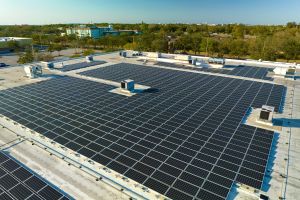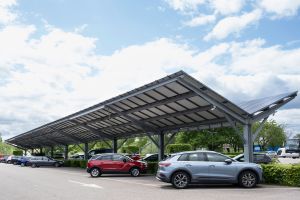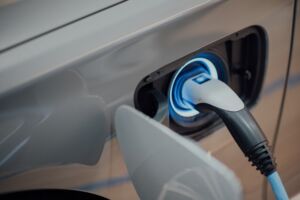 In today’s competitive landscape, commercial property owners are increasingly seeking sustainable solutions that not only reduce operational costs but also enhance their environmental footprint. One such solution continuing to gain traction is solar installation. By harnessing solar energy, businesses can achieve significant energy savings, demonstrate corporate responsibility, and even generate additional revenue streams.
In today’s competitive landscape, commercial property owners are increasingly seeking sustainable solutions that not only reduce operational costs but also enhance their environmental footprint. One such solution continuing to gain traction is solar installation. By harnessing solar energy, businesses can achieve significant energy savings, demonstrate corporate responsibility, and even generate additional revenue streams.
This comprehensive guide aims to walk you through the essentials of commercial solar installation, from understanding its benefits to navigating the installation process, financing options, and maintenance considerations.
Understanding the Benefits of Commercial Solar Installation
1. Cost Savings and Energy Independence
Implementing a solar installation can lead to substantial reductions in electricity bills. Over time, the savings can yield a significant increase in net operating income (NOI), leading to long-term financial benefits. Additionally, generating electricity from solar provides a buffer against fluctuating energy prices, offering greater energy independence.
2. Environmental Impact and Corporate Responsibility
Transitioning to solar energy reduces your business’s carbon footprint, showcasing a commitment to sustainability. This not only benefits the environment but also resonates with eco-conscious consumers and partners.
3. Enhanced Property Value
Properties equipped with solar installations often see an increase in market value. Prospective buyers or tenants view solar-equipped buildings as modern, energy-efficient, and cost-effective.
The Commercial Solar Installation Process
 1. Site Assessment and Feasibility Study
1. Site Assessment and Feasibility Study
Before embarking on a solar project, it’s crucial to assess the site’s suitability. Factors such as roof condition, orientation, shading, and local climate play a role in determining the feasibility of a solar installation.
2. System Design and Engineering
Once the site is deemed suitable, engineers design a system tailored to your energy needs and site specifications. This includes selecting appropriate solar panels, inverters, and mounting systems.
3. Permitting and Approvals
Navigating local regulations and obtaining necessary permits is a critical step. Working with experienced professionals ensures compliance with zoning laws, building codes, and utility requirements.
4. Installation and Commissioning
The physical installation involves mounting the solar panels, connecting electrical components, and integrating the system with the existing power infrastructure. After installation, the system undergoes testing to ensure optimal performance.
Financing Options for Commercial Solar Projects
1. Power Purchase Agreements (PPAs)
Under a PPA, a third-party developer (like SCF) installs and maintains the solar system on your property. You purchase the generated electricity at a predetermined rate, often lower than the local utility rate. This model eliminates upfront costs and transfers maintenance responsibilities to the developer.
2. Solar Leases
Similar to PPAs, solar leases involve paying a fixed monthly fee for the use of the solar system. While you don’t own the system, you benefit from the energy it produces.
3. Direct Purchase
Purchasing the system outright requires a significant upfront investment, but owners can take advantage of tax credit & depreciation to help shoulder the burden.
Integrating EV Charging Stations with Solar Installations
 As electric vehicles (EVs) become more prevalent, integrating EV charging stations with your solar installation can offer added benefits:
As electric vehicles (EVs) become more prevalent, integrating EV charging stations with your solar installation can offer added benefits:
1. Attracting Customers and Tenants: Providing EV charging can draw in eco-conscious consumers and tenants.
2. Maximizing Solar Usage: Charging stations can utilize excess solar energy, enhancing the efficiency of your system.
3. Additional Revenue Stream: Charging stations can be monetized, offering an additional income source.
Explore more on this topic in EV Charging as a Service – What Businesses Need to Know.
Maintenance and Monitoring of Your Solar Installation
Maintaining your solar system ensures its longevity and optimal performance:
1. Regular Inspections: Periodic checks can identify and address potential issues early.
2. Cleaning: Keeping panels clean from debris and dirt maintains efficiency.
3. Monitoring Systems: Modern installations come with monitoring tools to track performance and detect anomalies.
Many service providers offer maintenance packages, ensuring your system remains in top condition with minimal effort on your part.
Taking the Next Step Towards Solar
Embracing solar energy is a strategic move for commercial property owners aiming for sustainability, cost savings, and energy independence. By understanding the installation process, financing options, and maintenance requirements, you position your business at the forefront of the green energy movement.

